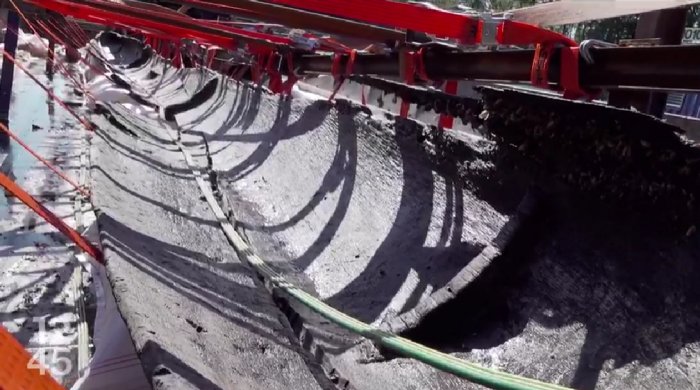Remarkably Well-Preserved 2,500-Year-Old Canoe Discovered In Swiss Lake
Archaeologists have discovered a remarkably well-preserved dugout canoe from the Early Iron Age in Lake Neuchâtel in western Switzerland.
According to the Vaud canton’s archaeology department, the 13-meter-long canoe was resting at a depth of 3.5 meters on a sandbank on the north shore of the lake.

Experts assisted the cantonal archaeologists in underwater salvage techniques. This delicate operation required many months of preparation.
“This is an archaeological discovery of considerable importance for our understanding of the prehistory of the region.
Its radiocarbon analysis dates it to between 750 and 520 B.C., a time when there were no villages on the shores of the lakes.

It is one of the very few boats from this period in Switzerland that has been preserved almost in its entirety,” said cantonal archaeologist Nicole Pousaz at the press conference.
The canoe has now been transported to a lab for special analysis. Archaeologists examine it to see what clues it holds to life during this time.
Photogrammetry and laser measurements will also be used to create a 3D model of what the canoe would have looked like, fully intact.

“She’s a very sickly old lady. Part of the sides of the canoe were torn out by storms, and the portion buried in the sediment was very cracked. It’s a very fragile object,” Jean-Daniel Renaud, who runs a company specializing in the technical aspects of underwater and terrestrial archaeology, told the press agency Keystone-SDA.
“It was made at the time from an oak trunk about 13 meters long and about a meter in diameter.
This type of canoe, which was particularly large, was mainly used for transporting goods and people or for fishing,” added Renaud.
According to the specialist, it is one of the largest and most complete canoes of its kind to have been discovered in Switzerland.